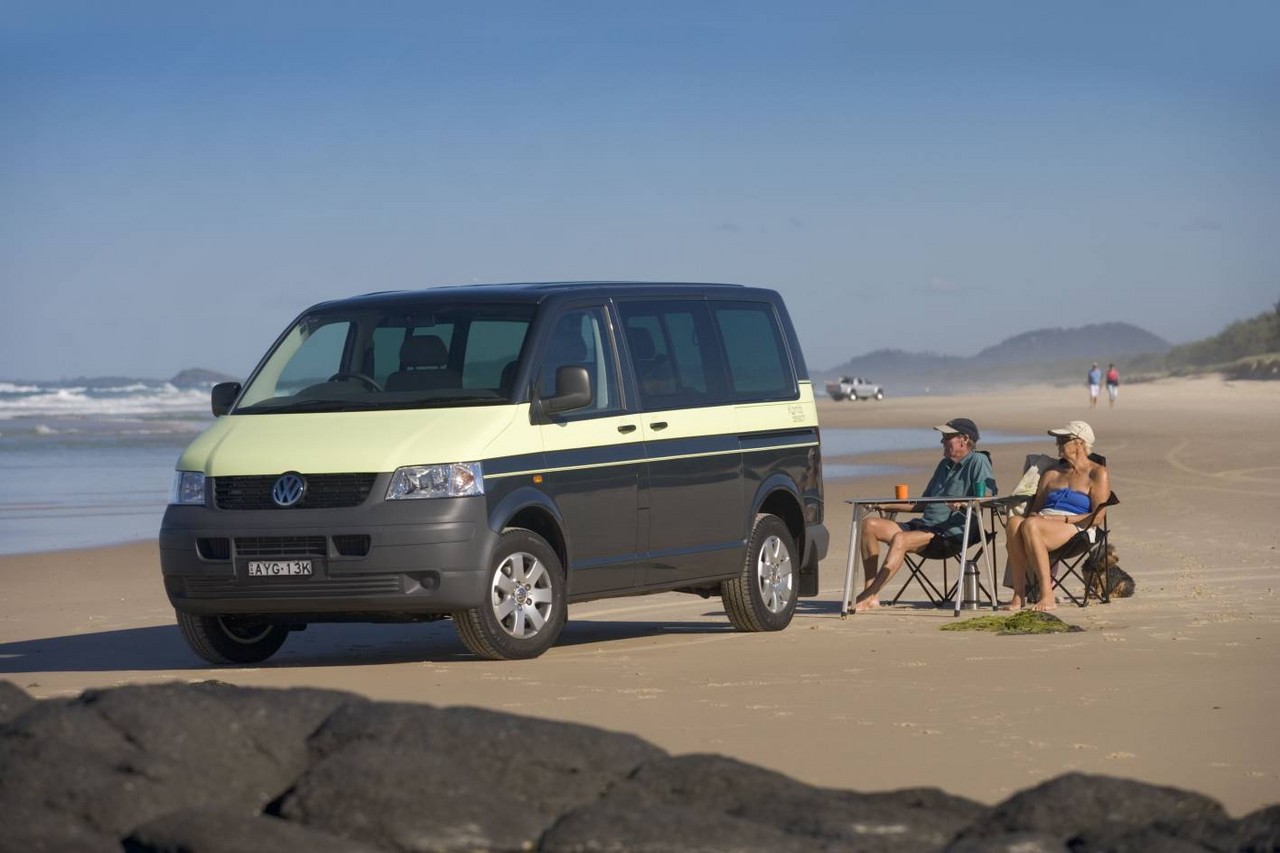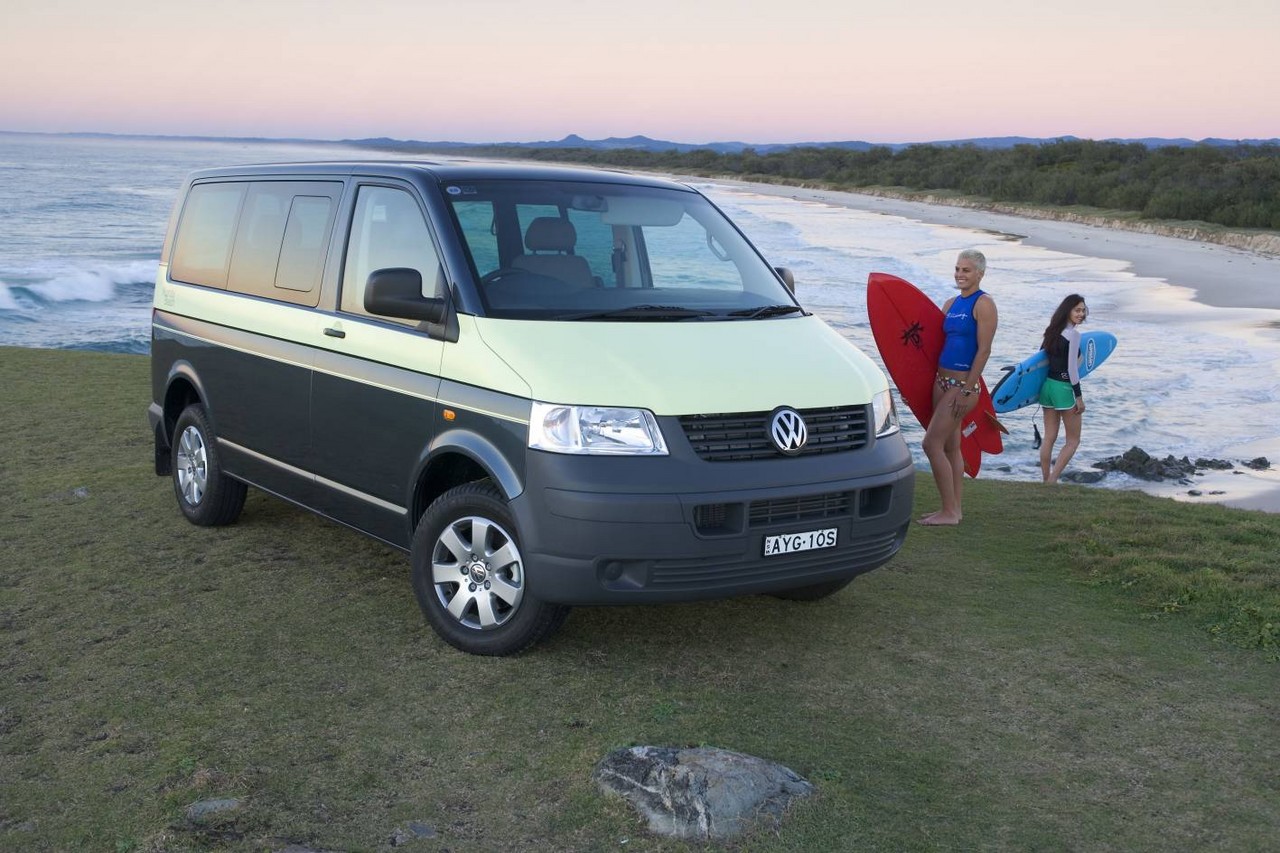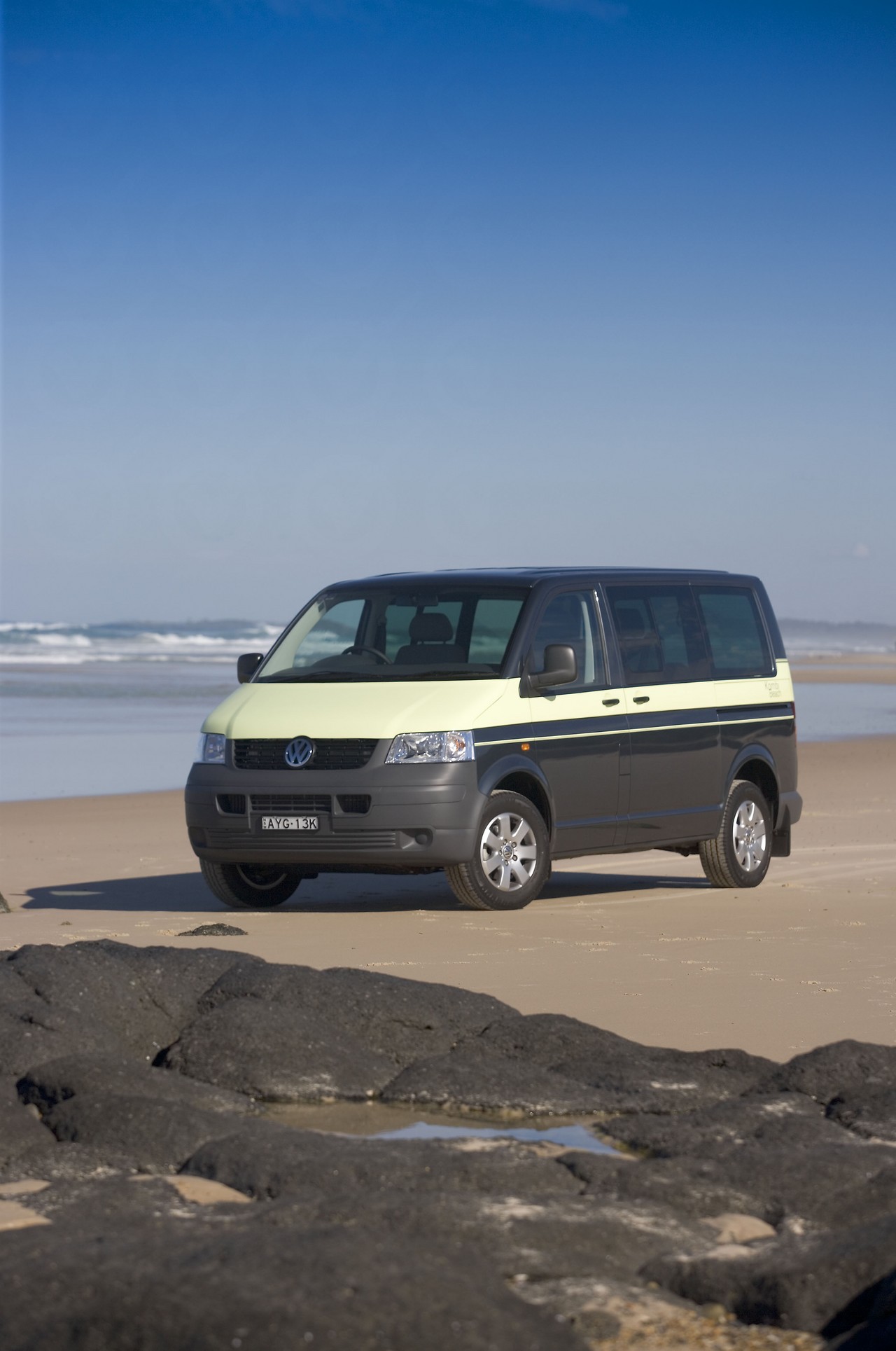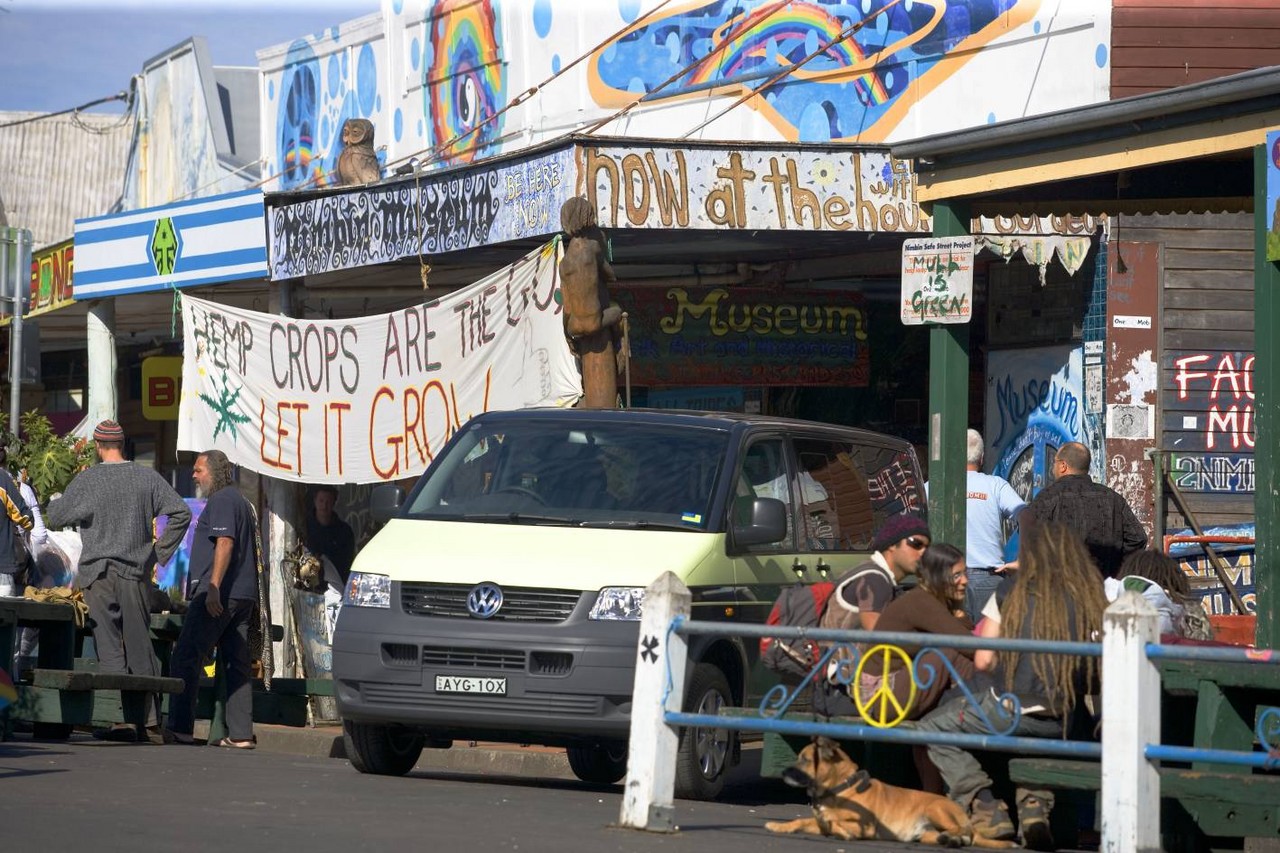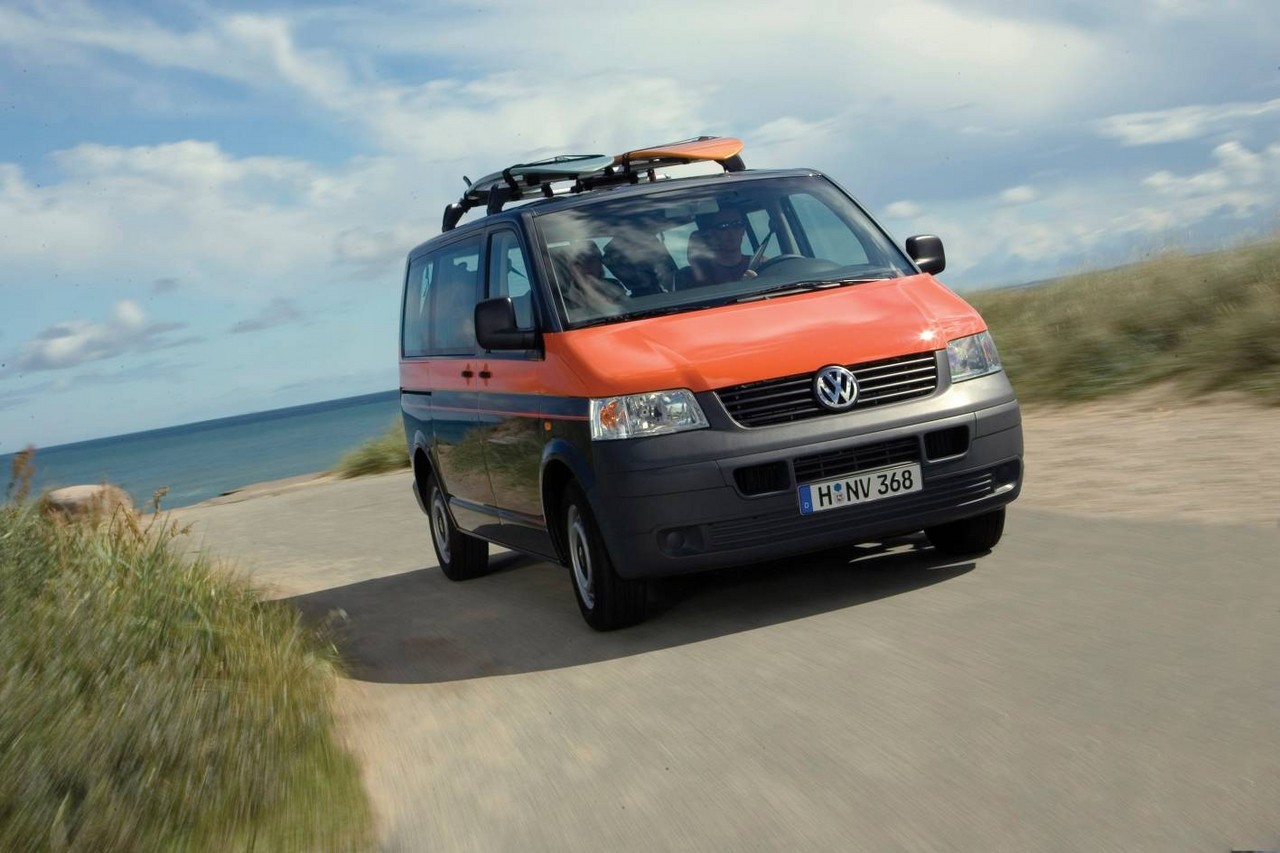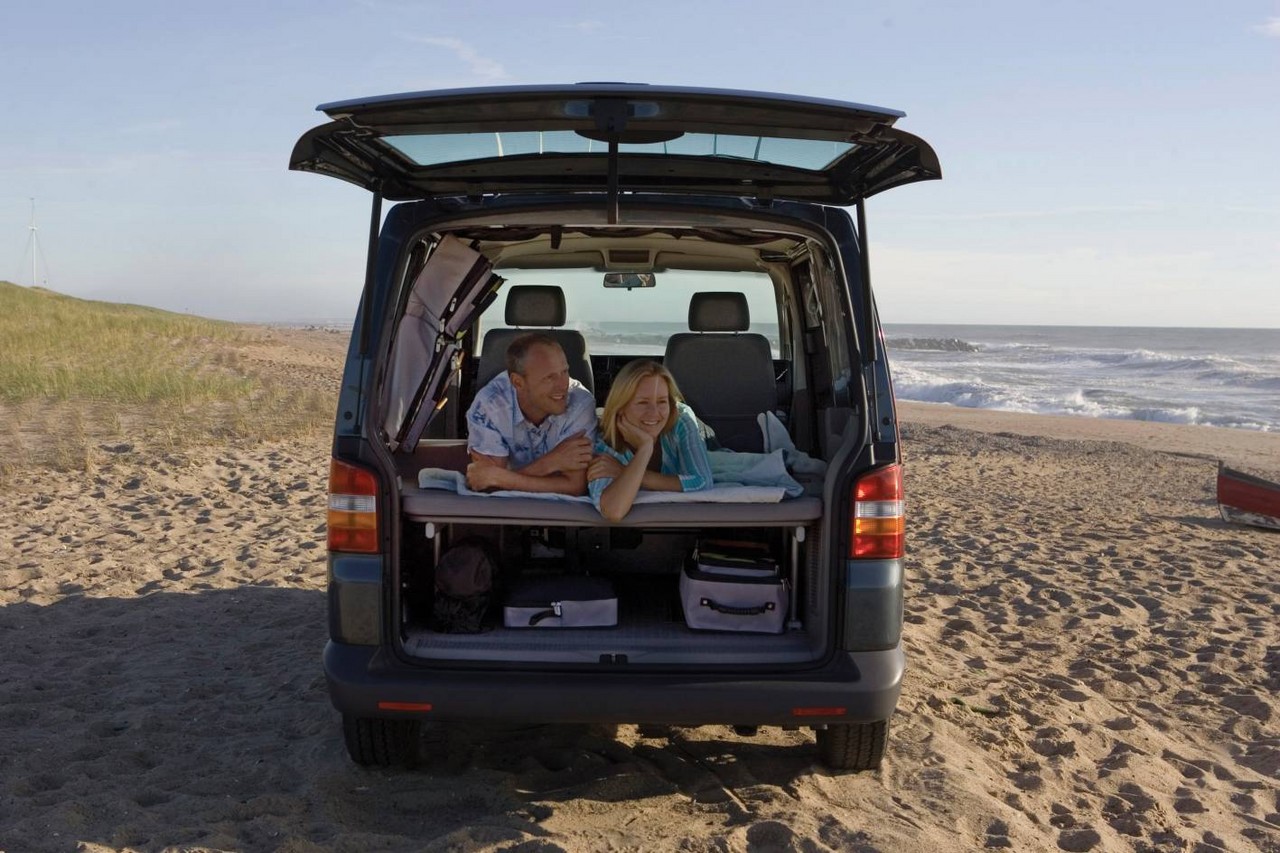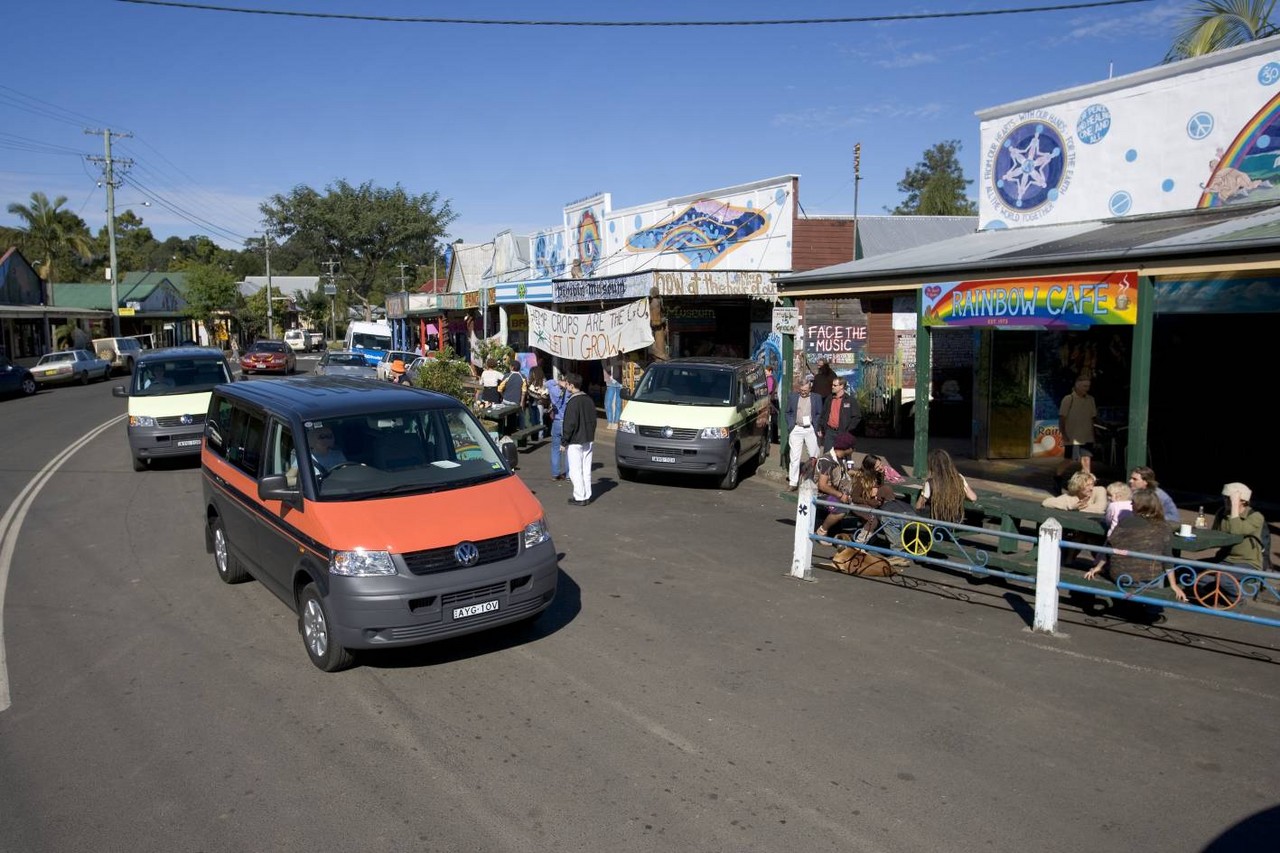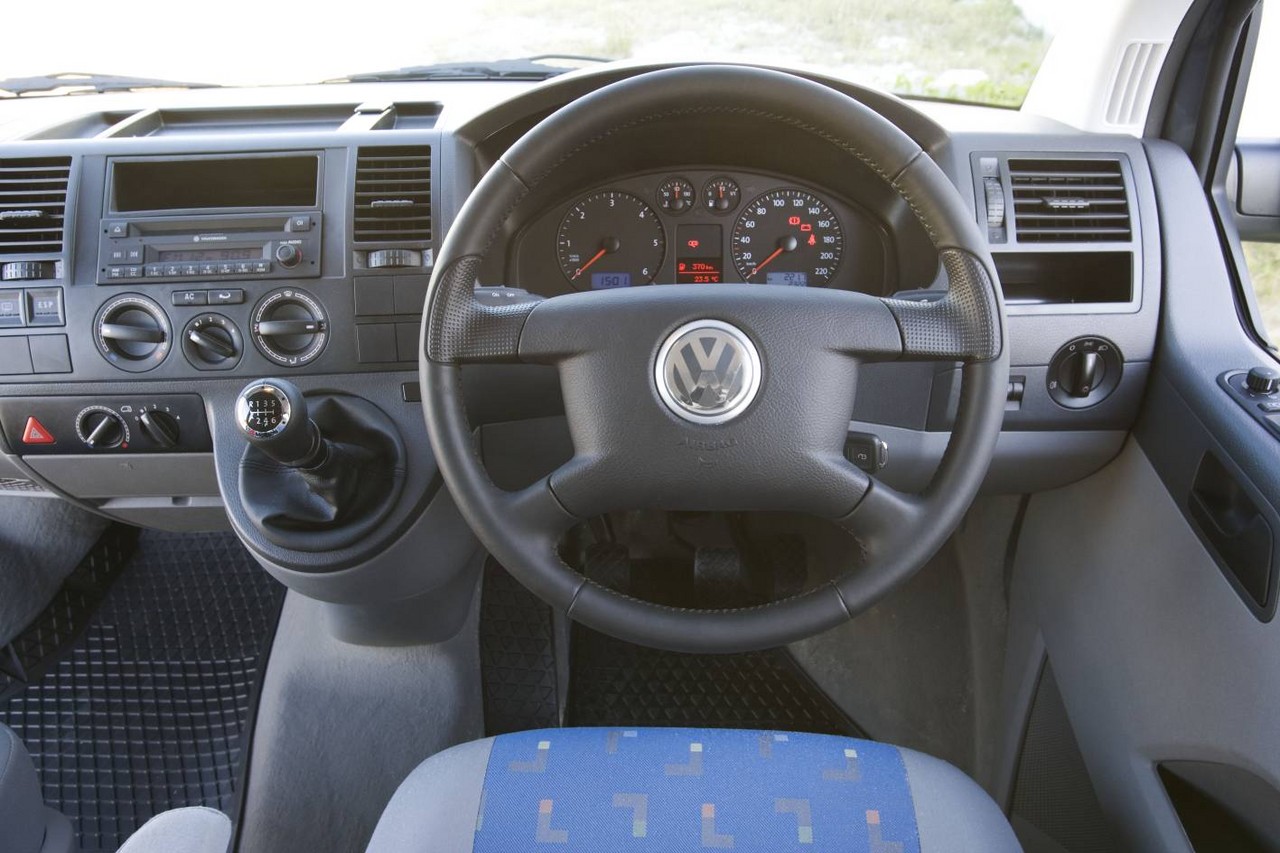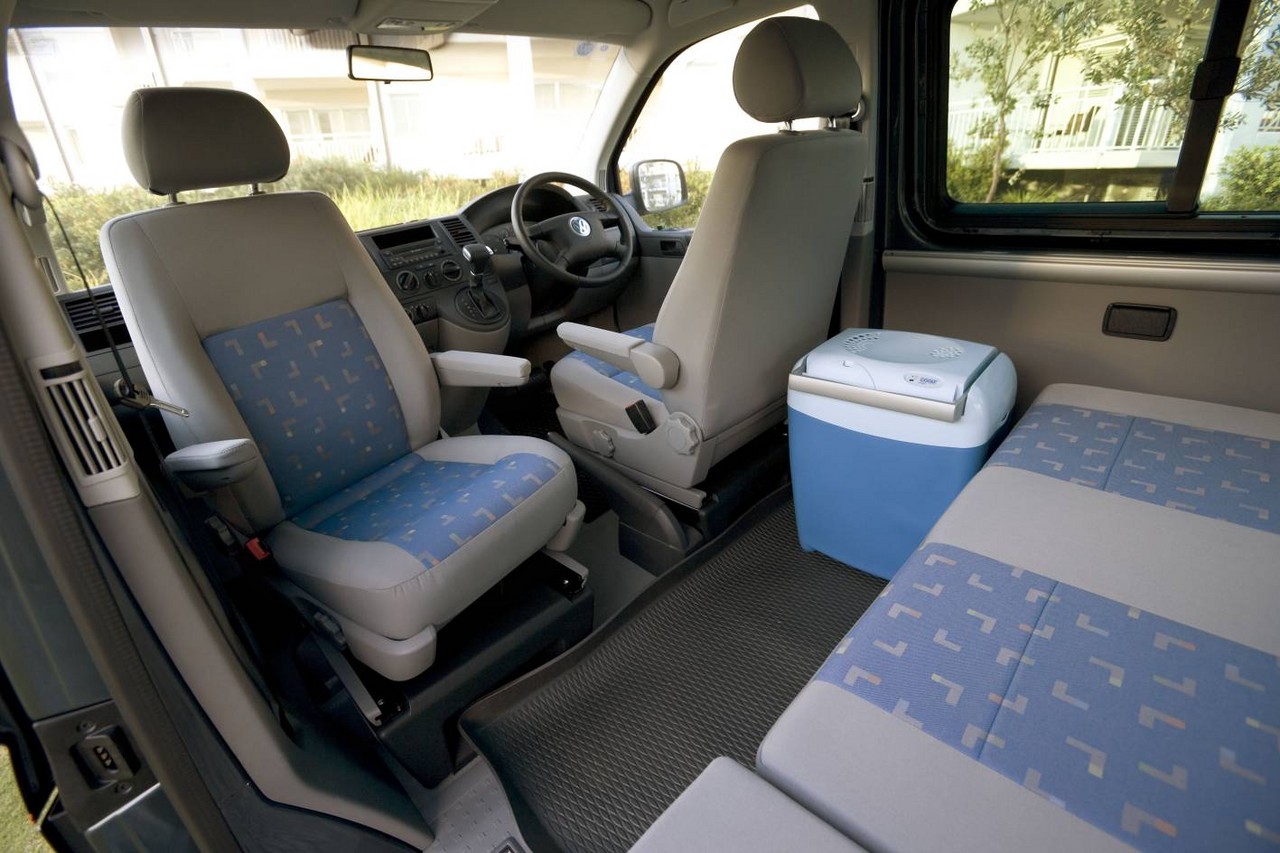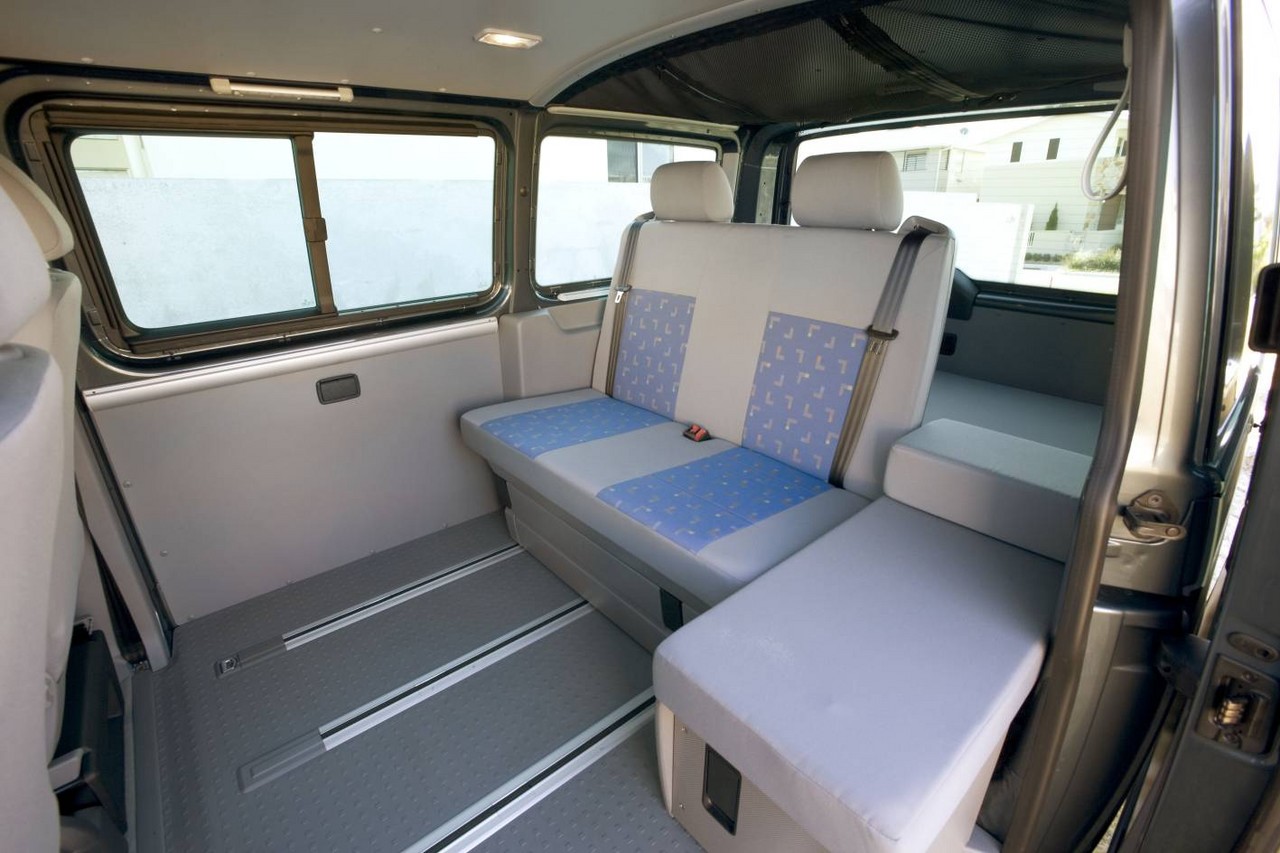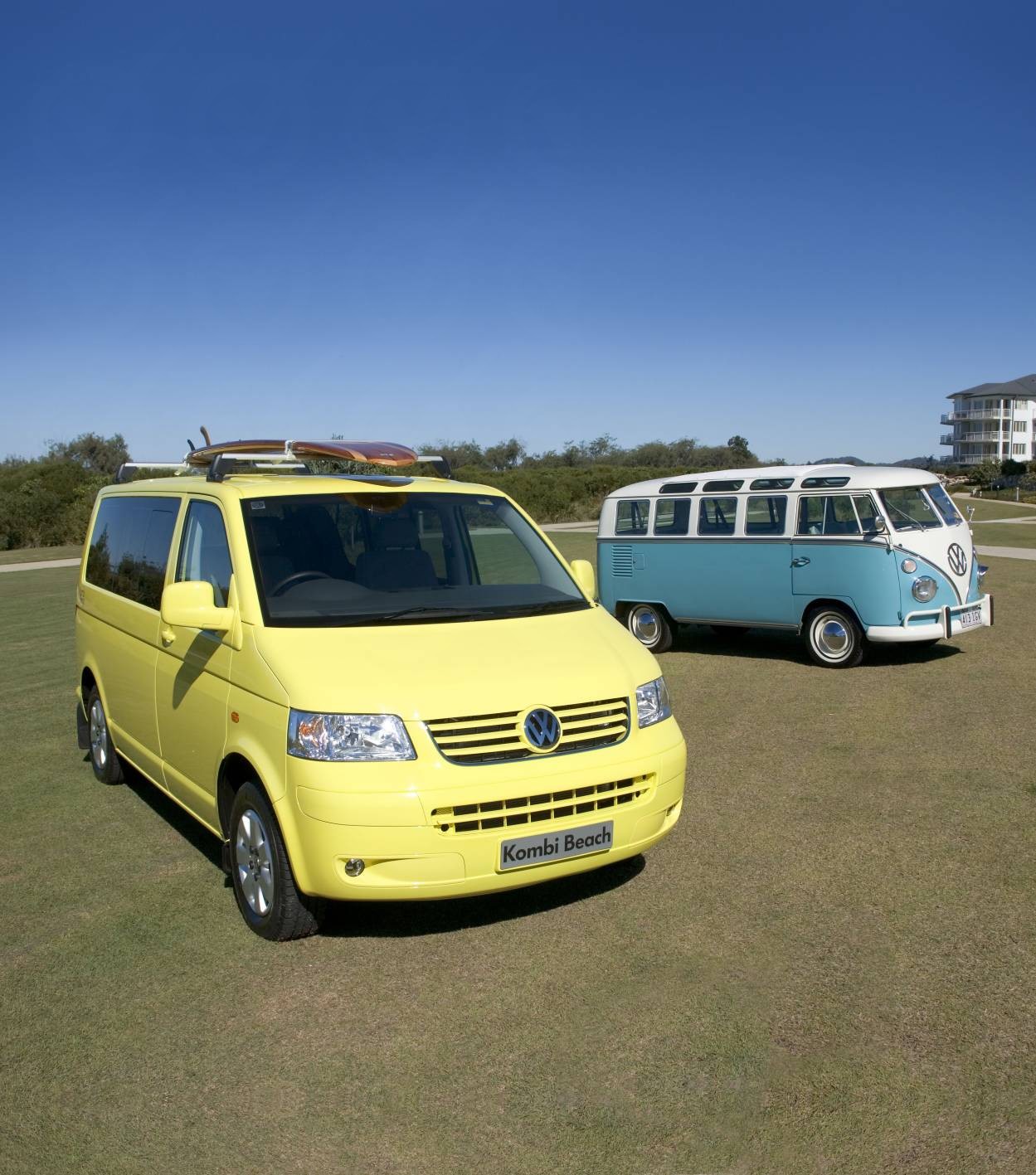
- Economical 2.5-litre turbo-diesel engine
- Comfortable front seats
- Good ride/handling balance
- Accurate steering
- Responsive brakes
- Cabin lacks sound insulation
- Flat rear seats lack support
- Cheap interior details
Overview
Released in June 2006, the Volkswagen T5 Kombi Beach was a four seat van. Manufactured in Hanover, Germany, and based on the T5 Multivan, the VW Kombi Beach was powered by a 2.5-litre five-cylinder turbo-diesel engine that was mated to a six-speed manual or automatic transmission; models fitted with Volkswagen’s ‘4Motion’ all-wheel drive system, however, were solely available with the manual transmission.
Engine
The Volkswagen Kombi Beach’s 2.5-litre five-cylinder diesel engine had an aluminium alloy block and cylinder head, Bosch Pumpe Düse direct injection, a die-forged steel crankshaft, a variable geometry turbocharger with intercooler, a single overhead camshaft (gear-driven), two valves per cylinder, hydraulic bucket tappets, a compression ratio of 18.0:1 and a diesel particulate filter.
Dimensions and interior
The Volkswagen T5 Kombi Beach was 4890 mm long, 1904 mm wide, 1959 mm tall and had a 3000 mm long wheelbase. Inside, the front seats could rotate 180 degrees and a rail system in the floor enabled a range of seating configurations as the two-seat rear bench could slide, swivel or be folded down to form – in conjunction with the stowage box and bed extension – a sleeping area measuring 2.3 metres long by 1.7 metres wide. There was also a folding table within the sliding and standard folding chairs.
Suspension
The VW Kombi Beach had MacPherson strut front suspension and independent rear suspension with semi-trailing arms.
| Variant | Engine | Drive | Trans. | Peak power | Peak torque | |
|---|---|---|---|---|---|---|
| Kombi Beach | 2.5 TDI | 2.5-litre BNZ turbo-diesel I5 | FWD | 6sp man., 6sp auto |
96 kW at 3500 rpm | 340 Nm at 2000-2300 rpm |
| AWD | 6sp man. |
4-Motion all-wheel drive system
The Kombi Beach’s ‘4Motion’ all-wheel system utilised a second generation Haldex limited slip coupling with a mechanical hydraulic pump. In ordinary conditions, the system provided a 90:10 front:rear torque split. If traction was lost, however, the coupling would engage all-wheel drive and begin to transfer torque to the rear axle with one-quarter of a wheel’s rotation.
Safety equipment
Standard safety equipment for the Volkswagen Kombi Beach included dual front airbags, ABS, electronic brake force distribution, brake assist, traction control and front seatbelts with pretensioners and load limiters.
Optional safety equipment included front side airbags, curtain airbags and electronic stability control.
Features
Standard features for the VW Kombi Beach included a four speaker sound system with CD player, air conditioning, a rear heater, rear fog lights, a leather-wrapped steering wheel and gear lever, remote central locking, power windows and heated mirrors, a height and reach adjustable steering wheel, cargo net, ambient lighting, 12 volt power outlet, tinted windows, a trip computer, motion-sensing alarm and immobiliser.
The Kombi Beach was also fitted with an additional battery.
Related links
